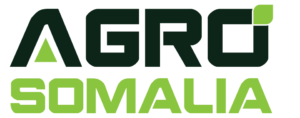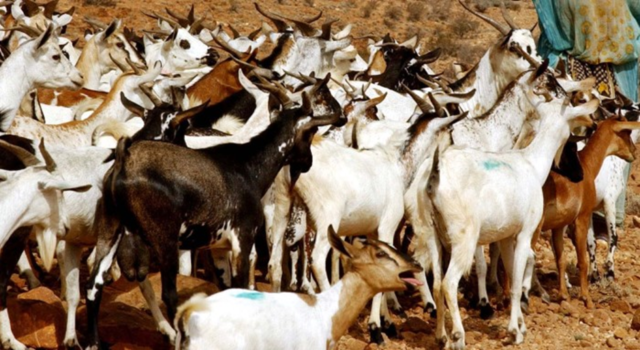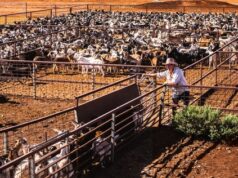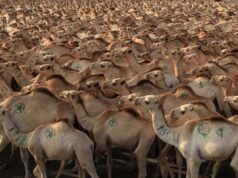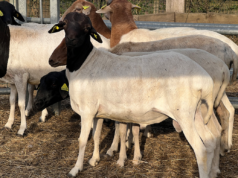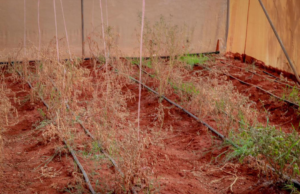- Introduction to Overview of Goat in Somalia
Somali clans traditionally inhabit grazing areas that cross into Ethiopia, northeastern Kenya, and southern Djibouti. Around 80% of the Somali population has historically been pastoralists, practicing either nomadic or semi-nomadic lifestyles, especially in northern and central Somalia as well as Ethiopia’s Somali Region.
In southern Somalia, the presence of two major rivers supports a mixed farming system, where crops are cultivated alongside grasslands. Livestock exports, particularly of goats and sheep, are a cornerstone of the economy but have been negatively impacted by prolonged drought conditions over the past seven years. The livestock sector employs about 65% of the population, and 69% of Somalia’s land is used as pasture. Domestic markets also generate significant income through the sale of livestock, meat, and milk.
2. Goat types
The body is relatively large between 70 and 75 cm and weighs up to 42 kg in adult mature males the facial profile is straight, the coat colour is white and relatively shiny, the coat hair is short and fine and 19% of the males 8% of the females have been reported to be polled, the ears can be horizontal or semi-pendulous (Anne W.T. Muigai 2018).
Long-eared Somali herd in southern Somalia. Photo by Tobin Jones for AMISOM.

It is a small goat with a height of 61–65 cm and a body weight of 28–33 kg in mature males, the coat colour is predominantly white, and the hair is short, the facial profile is straight and up-to 19% males and 8% females have been reported as polled, the ears are horizontal or semi pendulous (Anne W.T. Muigai 2018).

3. Goat production
The below graph shows the trends in goat milk production in Somalia from 1994 to 2022. Production peaked in 1997 and 2014, reaching over 410,000 metric tons. There was a noticeable decline after 1997, followed by fluctuations over the years. Between 2013 and 2015, production increased significantly, with 2014 being a high point. However, since 2016, goat milk production has shown a gradual decline, stabilizing at lower levels from 2019 to 2022. The overall trend indicates variability influenced by external factors such as climate, grazing conditions, or economic challenges.
The population of goats in Somalia, measured in millions of heads, from 1980 to 2021. Goat numbers peaked in 1985 at 19 million but showed a decline to 12.5 million by 1995. The population fluctuated in the following decades, reaching 14.6 million in 2005 before gradually decreasing again. From 2010 onward, goat numbers stabilized around 11.5 to 11.7 million, maintaining consistency through 2021. The trends reflect changes influenced by factors such as droughts, grazing availability, and economic conditions.

Graph 1. Goat Population Trends by million heads in Somalia (1980–2021).
FAOSTAT; 2023

Graph 2. Production/Yield quantities of Raw milk of goats in Somalia. 1994 – 2022
FAOSTAT; 2023
The average production of raw goat milk from 1994 to 2022 in various countries. India leads as the largest producer with over 4.4 million tons, followed by Sudan (former) with approximately 1.32 million tons, and Sudan itself, producing around 1.14 million tons. Other significant producers include Pakistan, France, South Sudan, Spain, Greece, Somalia, and Turkey.
These countries, particularly in Asia, Africa, and Europe, play vital roles in goat milk production due to the high prevalence of goat farming, which is crucial for both nutritional and economic reasons. Goat milk is highly valued for its digestibility and nutritional content, contributing to local diets, dairy industries, and economies.
Factors such as geography, climate, traditional farming practices, and government support influence the scale of production. However, challenges like climate change, limited infrastructure, and livestock diseases impact the consistency of production in many regions.

Graph 3. Production of Raw milk of goats: top 10 producers Average 1994 – 2022
FAOSTAT; 2023
4. The Role of Goats in Somalia’s Economy and Livelihoods
The below graph represents the export quantity and value of goat meat from Somalia between 2016 and 2022. It shows a decline in both the quantity and value of goat meat exports over this period faostat.
In 2016 and 2017, Somalia exported around 2 million units of goat meat, with a value of $180,000 for each year. The export quantity dropped significantly in 2018 to 1 million units, and the export value was halved to $90,000. Although the quantity rebounded to approximately 1.15 million units in 2019, the value increased slightly to $132,409. However, in 2020 and 2021, the export quantity continued to decline to about 1.1 million and 700,329 units respectively, while the export value showed a moderate increase to $133,959 in 2020, but then decreased to $98,790 in 2021.
By 2022, the export quantity fell dramatically to just 196,056 units, and the value also dropped significantly to $6,796, indicating a sharp decline in both the volume and the revenue from goat meat exports. This decline could be influenced by various factors, such as market demand, logistical challenges, or disruptions in the supply chain, which may have affected Somalia’s ability to maintain export levels.

Graph 4. Export Quantity and Value in Somalia (2016–2022)
Reference
Goat Breeds. 2022. Breed Profile: Somali Goat Galla Goats Provide Somali Goat Meat, Milk, Income, and Cultural Benefits for Arid Grassland Pastoralists. https://goatjournal.iamcountryside.com/goat-breeds/somali-goat-breed-profile/
Anne W.T. Muigai. 2018. The indigenous farm genetic resources of Somalia: Preliminary phenotypic and genotypic characterization of cattle, sheep and goats. https://www.researchgate.net/publication/322636677_The_indigenous_farm_genetic_resources_of_Somalia_Preliminary_phenotypic_and_genotypic_characterization_of_cattle_sheep_and_goats#fullTextFileContent
FAO; 2023. Crops and livestock products. https://www.fao.org/faostat/en/#data/TCL/://www.fao.org/faostat/en/#data/QCL/visualize
